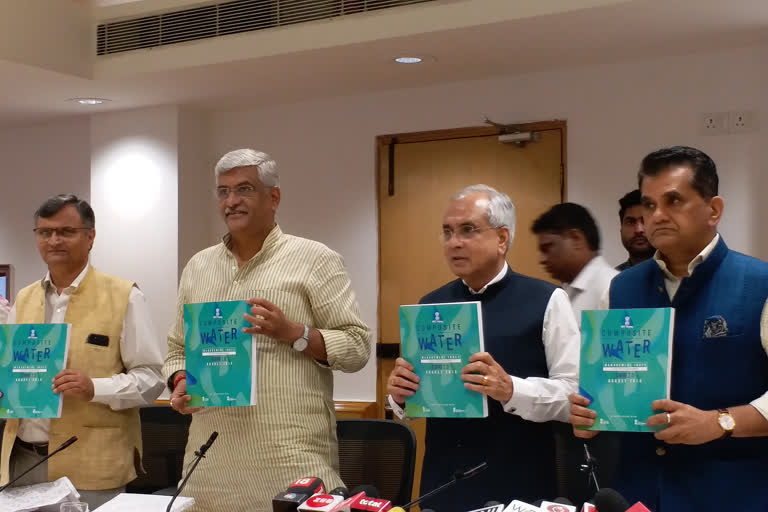New Delhi: Gujarat retained the top position in water management according to NITI Ayog report as it warned India will lose 6 per cent of gross domestic product (GDP) by 2050 because of a water crisis, setting off alarm bells on an impending water scarcity scenario.
India’s demand for water will exceed supply by a factor of two by 2030, it said.
The NITI Aayog's report was launched by Union Minister of Jal Shakti, Gajendra Singh Shekhawat, NITI Aayog's Vice Chairman Rajiv Kumar and CEO Amitabh Kant.
Releasing the second edition of the Composite Water Management Index, the government think tank said that the annual per capita availability of water is expected to reduce to 1,140 cubic metres by 2050, close to the official water scarcity threshold of 1,000 cubic metres.
Gujarat retained the top position on the Index for the third consecutive year with 75 points closely followed by Andhra Pradesh with 74 points and Madhya Pradesh at 71 points among the non-Himalayan states.
“The results of this year’s exercise reveal an overall improvement in state performance, but severe disparities remain between states, and across themes, which must be bridged,” the report stated.
Uttar Pradesh, Rajasthan, Kerala, and Delhi — four of the top 10 contributors to India’s economic output — have scores ranging from 20 to 47 points.
The report said these low-performing states bear the largest burden of the national population and economic production.
“The 16 low-performing states collectively account for 48 per cent of the population, 40 per cent of agricultural produce, and 35 per cent of economic output for India.”
Quoting a study by Assocham, the report said that an investment of Rs 20 trillion will be required to bridge the expected water supply gap by 2030.
The report said, “One of the key challenges driving this water crisis is the lack of water data. Data systems related to water in the country are limited in their coverage, robustness, and efficiency.”
While a declining per capita water availability contributes towards India’s water crisis, the NITI Aayog report said that the failure to manage its water resources effectively is also a major reason.
“India ranks as the third-largest exporter of groundwater through virtual water trade, while 52 per cent of its wells are facing declines.”
The report has also flagged off concerns on achieving food security with rising population and water scarcity.
India will host more than 1.5 billion people by 2030, and serving the food needs of its entire population will be a daunting task.
Pointing towards a “serious water concern in the agriculture sector” the report said, “About 74 per cent of the area under wheat cultivation and 65 per cent of the area under rice cultivation faces significant levels of water scarcity.”
Also Read: Terrorism, corruption being effectively tackled in 'New India': PM Modi



